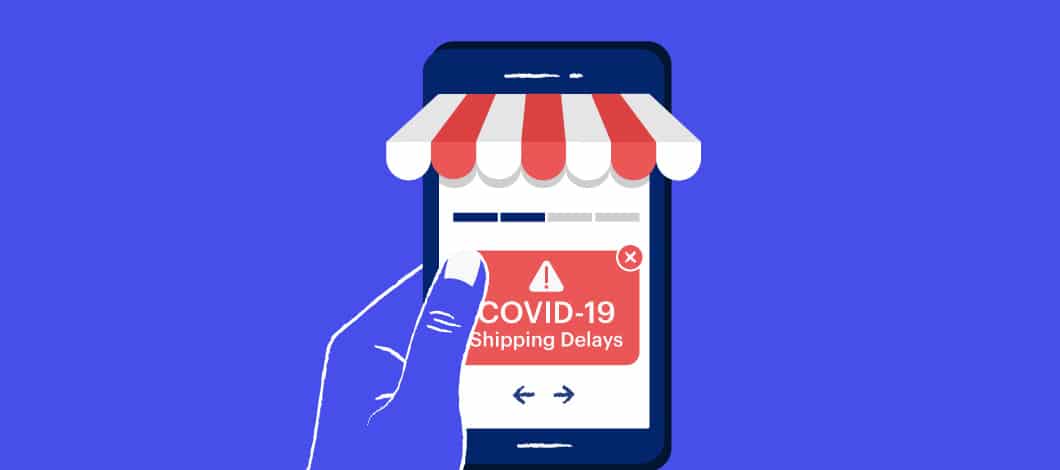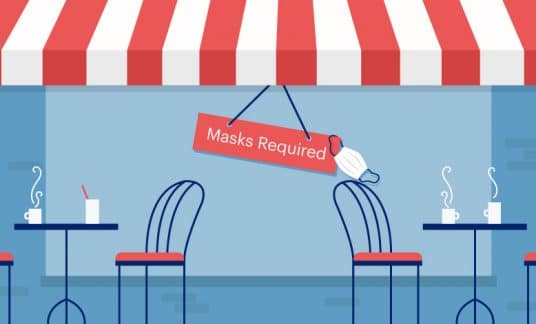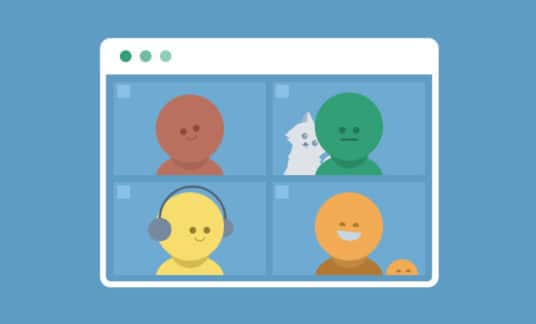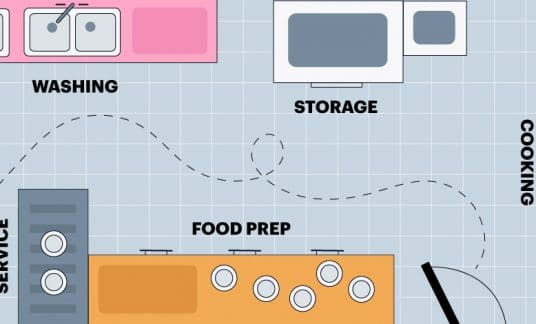Managing customer expectations can be tough for a small business. Once you add weather disasters, a global pandemic and some civil unrest, the obstacles pile up.
Keep your reputation on solid ground by learning how to anticipate your client’s needs and pivot your business strategies accordingly.
Understanding Customer Needs
Customer expectation is a client’s beliefs about a brand, products or services. Clients expect certain responses and assume your company will deliver.
Your customers may have expectations about:
- Your product or service functionality and features
- Reply times to email, social media messages and phone calls
- Knowledge levels of customer service agents
- New products and updates to existing ones
- How you treat their data via privacy and security protocols
- Shipping and fulfillment options
- Your response to local or national situations
- Sanitation and safety procedures
With the rise of digital channels and the speed of ecommerce deliveries, it’s difficult for small business owners to compete. However, meeting customer needs starts with knowing your target market and continually updating buyer personas.
Customer Service Expectations During COVID-19
Although digital shopping was popular pre-pandemic, its use skyrocketed as brick-and-mortar shops faced increasing restrictions. According to McKinsey & Co., 75% of U.S. consumers are “trying a new shopping behavior in response to economic pressures, store closings and changing priorities.”
New shoppers and existing customers expect your business to adapt to the changes. If you don’t, your clients won’t hesitate to try a new brand.
The fourth edition of Salesforce’s State of the Connected Customer survey highlights top customer expectations. Consumers want brands to:
- Turn in-person services and experiences into digital ones
- Provide immediate answers when a guest reaches out
- Show empathy in messaging and communications
- Know customer’s expectations and needs
- Provide convenient fulfillment and shipping choices
- Deliver consistent experiences across all channels
- Clearly state and show their values
How to Understand Customer Expectations
Your customers’ lives were disrupted, which altered their behavior, preferences and expectations. You can’t solve problems and find solutions for customers without first understanding how they’ve changed.
Learn about your customers by performing target market research using techniques such as:
- Post a poll: Poll your social media audience about life changes or new pain points
- Check-in with customers: Send an email that’s not related to sales or promotions
- Send surveys: Ask clients if your product or services met their expectations
- Review web analytics: Discover changes in how your customers navigate your website
- Use social listening tools: Uncover customer sentiment around various topics

Best Practices for Managing Client Expectations
How can you stay on top of customer expectations and deliver consistently excellent customer experiences? The answer is to take a comprehensive approach. Use these best practices to ensure your service level standards are up to par.
1. Find New Ways to Meet Customer Demand
From slower shipping times to supplier issues, meeting customer demand is a bit of a juggling act. Although consumers understand some of the difficulties small businesses face, they still want options.
Furthermore, many shopping behaviors and expectations are here to stay, meaning your customers may expect convenient pickup alternatives post-pandemic. To remain competitive, explore ways to make shipping and fulfillment work for the long term.
For instance, local small businesses may continue to offer store-to-door delivery for a small fee. Or company owners may find that “buy online, pick up in-store” (BOPIS) options are a great way to keep customers happy without worrying about shipping.
2. Keep Communications Clear and Transparent
Part of managing customer expectations involves clear and correct messaging. During the pandemic, many customer complaints occurred due to business hour changes that weren’t conveyed to shoppers.
A lack of transparency about shipping or fulfillment delays also led to poor customer reviews. To solve these problems and ensure your information is updated, create a checklist of touchpoints to address. Include:
- Google Business pages
- Social media profiles and bios
- Frequently-asked-question (FAQ) pages
- Website business hours
- Shipping time popups or pages
- Third-party websites or databases
Consider using a popup, banner or explainer statement to manage customer expectations. If you know your website isn’t mobile responsive but can’t afford to fix it, add a popup that says “use your desktop for an optimal shopping experience.”
For ongoing shipping issues, attach a banner to product pages saying you’re sorry for the inconvenience and appreciate your customer’s support, but shipping delays are expected.
Retailers use this tactic by adding notes about clothing running smaller than average or explaining colors in the photo may look different in person.
Overall, being proactive and anticipating your customer’s expectations saves time while improving experiences.
3. Emphasize Convenience at Every Touchpoint
Customers expect convenient payment options and smooth shopping cart experiences. According to Experian’s Global Insights Report, “1 in 3 consumers are only willing to wait 30 seconds or less before abandoning an online transaction, specifically when accessing their financial accounts.”
By understanding your customer’s needs, you can deliver better check-out experiences and reduce shopping cart abandonment.
Begin by finding out your customers’ preferred payment methods and any concerns they have around security. Then explore ways to decrease inconvenience during in-store or digital shopping experiences.
Business owners may add extra payment gateways on websites, like PayPal or mobile wallet options such as Apple Pay. At your physical business, handheld tablets may increase check-out speed resulting in shorter lines.
4. Use Technology to Support Customers
Although your customers crave a personal approach, they also understand the benefits of technology. According to Experian, “60% of consumers have higher expectations of their digital experience than before COVID-19.”
If you haven’t upped your digital game, then it’s time to start thinking about how to do it. Improve your tech stack and help customers by:
- Offering self-service options on your website, like knowledge bases
- Using a customer relationship management (CRM) system to track communications
- Reviewing software for ease-of-use before launching a customer-facing application
- Providing artificial intelligence (AI) customer service options, such as chatbots
- Ensuring mobile responsiveness on your website and landing pages
5. Demonstrate Your Values
An incredible “99% of customers believe companies need to improve their trustworthiness, and 90% of customers say how a company acts during a crisis reveals its trustworthiness,” according to Salesforce.
Consistency in all interactions is vital to building brand trust. You can also use social proof to enhance your reputation. Receiving testimonials and reviews can bolster your credibility and help you meet customer expectations.
However, you also must show you’re part of the community and care for your employees. Tie your brand values and mission statement into every action you take, from posting on Facebook to how your customer service center ends calls.
You can even connect your values to the reasoning behind new safety procedures or changes.
6. Follow Up With Customers
Your hard work doesn’t stop once a sale is finalized. Instead, you have an opportunity to turn a customer into a brand ambassador. But it’s not only about sales. Every time a customer interacts with your brand, it’s essential to follow up.
For example, a social media user may comment on your brand’s social media post. Maybe it’s something simple, like “Love this!” Don’t ignore those comments. Instead, reply with a message saying, “Thanks, we do too! Let me know if you have questions about how it works.”
Plus, don’t be shy about sending a personalized message after clients receive your product. People want to know there are humans behind your brand. Build customer relationships with a clear outreach strategy.
7. Encourage Cross-Department Collaboration
The sales funnel and buyer’s journey used to be a lot simpler. Nowadays, your customer’s path may connect with many digital and physical touchpoints. A prospect may read your customer service review responses. Or interact with a virtual chatbot managed by marketing. Friction in one or more areas can affect your lead’s next steps.
For instance, repeated complaints about the same problem could demonstrate a mismatch between customer expectations and reality.
If your teams don’t collaborate, it can be hard to see and understand the entire customer journey. A lack of communication between your sales, marketing, and customer service teams leads to a disconnect.
This problem is often seen with products requiring batteries. People leave negative reviews about ruined birthdays because they thought an item came with batteries. Companies respond by pointing out that it’s in the product description.
A better way to manage customer expectations is by highlighting important product information in bold and adding a popup at check-out with a reminder.
But first, data needs to pass from the teams who oversee reviews and take customer service calls. Speed is essential. You can’t wait for days or weeks to make changes and risk more problems.
Break down silos and encourage cross-department collaboration by:
- Taking a top-down approach with leaders using effective communication methods
- Sharing customer complaints with teams in other departments
- Understanding customer needs by requiring staff to take the customer journey
- Using a cloud-based collaboration tool to identify problems quickly
- Prioritizing company-wide goals that all teams can work towards
- Cross-training team members, so employees see how the total process works
Start Exceeding Customer Expectations
One of the best things you can do when it isn’t business as usual is to show your brand’s human side and be forthcoming. Deliver consistent experiences and stay connected while making meeting customer expectations a priority.











